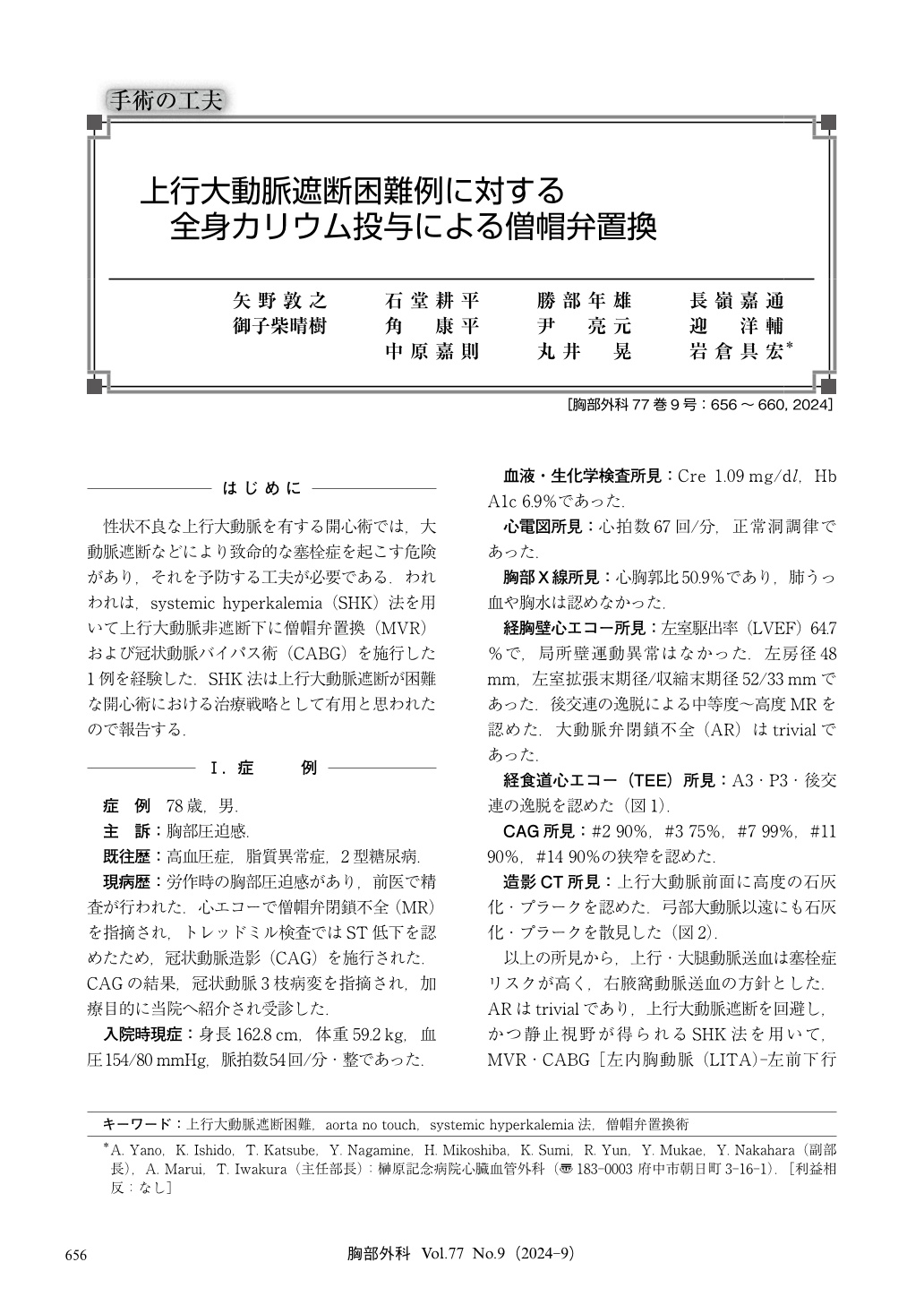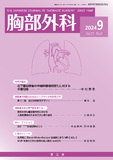Japanese
English
- 有料閲覧
- Abstract 文献概要
- 1ページ目 Look Inside
- 参考文献 Reference
性状不良な上行大動脈を有する開心術では,大動脈遮断などにより致命的な塞栓症を起こす危険があり,それを予防する工夫が必要である.われわれは,systemic hyperkalemia(SHK)法を用いて上行大動脈非遮断下に僧帽弁置換(MVR)および冠状動脈バイパス術(CABG)を施行した1例を経験した.SHK法は上行大動脈遮断が困難な開心術における治療戦略として有用と思われたので報告する.
We report a successful case of mitral valve replacement and coronary artery bypass grafting under mild hypothermia and systemic hyperkalemia in a patient with severely atheromatous ascending aorta on which placing a clamp seemed contraindicated. A 78-year-old man was referred to our hospital with the diagnosis of heart failure associated with severe mitral regurgitation and coronary artery disease. Echocardiography showed severe mitral regurgitation due to A3, P3 and posterior commissure (PC) prolapse and coronary angiography showed three vessel disease. Computed tomography (CT) revealed a severely atheromatous ascending aorta. Surgery was performed under cardiac arrest using systemic hyperkalemia and superior transseptal approach. Although cardiopulmonary bypass (CPB) time was a little prolonged in order to wash out potassium with dilutional ultrafiltration, the patient was uneventfully separated from CPB. The patient had no neurological complications and was discharged from the hospital 15 days after surgery. Mitral valve replacement under cardiac arrest using systemic hyperkalemia without cross clamping the aorta is useful to avoid neurological complications.

© Nankodo Co., Ltd., 2024


